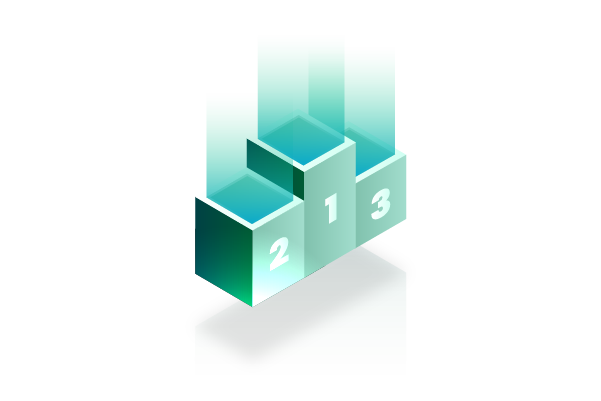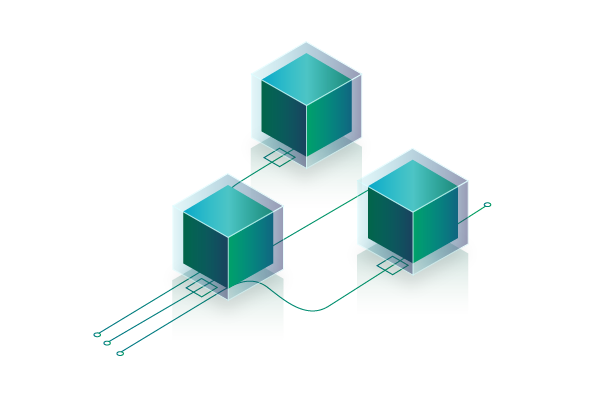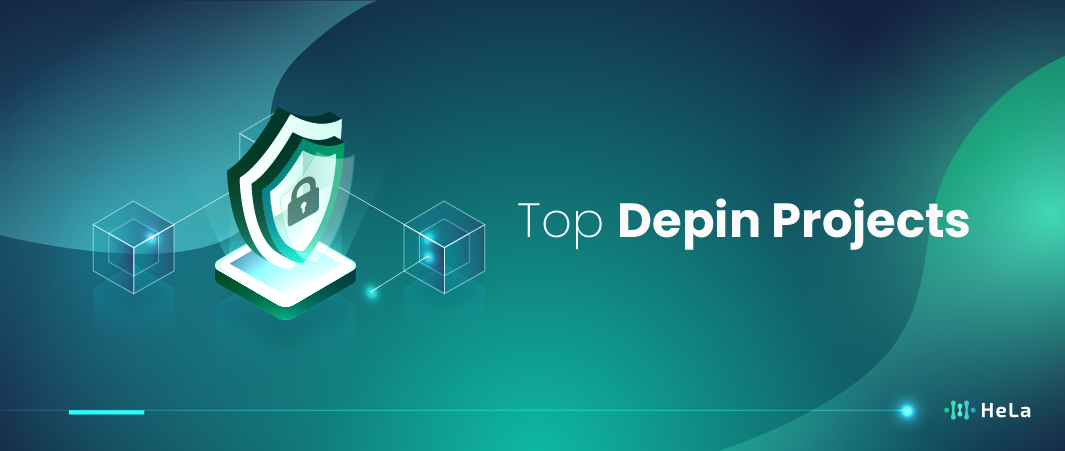In 2025, the boundaries between the digital and physical worlds are blurring faster than ever—thanks to a groundbreaking movement in Web3 known as DePIN, or Decentralized Physical Infrastructure Networks. While most crypto headlines still focus on DeFi, NFTs, or AI, DePIN is quietly revolutionizing how we build and manage real-world systems. These projects allow communities—not corporations—to deploy and maintain physical infrastructure like wireless networks, energy grids, data sensors, and more, all powered by crypto incentives and governed by blockchain.
From decentralized 5G towers to Web3-powered vehicle data networks, DePIN is reshaping the internet from the ground up. In this updated 2025 list, we spotlight the Top 10 DePIN Crypto Projects leading the charge—bringing real utility, real adoption, and real-world impact.
Top 10 DePIN Crypto Projects in Web3 to Watch in 2025

In 2025, DePIN is no longer a niche. It’s the heart of Web3’s real-world impact, enabling practical, scalable solutions across industries from mobility to weather forecasting to cloud computing.
This updated 2025 list covers the Top 10 DePIN Crypto Projects pushing boundaries, delivering utility, and making Web3 truly physical.
1. peaq
Category: Infrastructure for Machines & Devices
Blockchain: Polkadot (L1 for DePIN)
Token: $PEAQ
Website: https://www.peaq.network
Why It Matters:
peaq is the infrastructure backbone for the Economy of Things. It allows machines—like EVs, drones, and robots—to operate as autonomous economic agents. Devices can have decentralized IDs, earn tokens for providing services, and even vote in governance decisions.
2025 Highlights:
Hosts over 20+ DePIN dApps across energy, mobility, logistics
Enables M2M (machine-to-machine) payments on-chain
Used in smart parking, autonomous EV fleets, and drone delivery networks
Unique Value:
peaq transforms machines into on-chain entities with verifiable behavior and revenue logic. Think: Tesla meets DAO.
2. Helium
Category: Decentralized Connectivity
Blockchain: Solana
Token: $HNT
Website: https://www.helium.com
Why It Matters:
Helium is the OG DePIN project that pioneered community-powered IoT networks. In 2025, it also offers decentralized 5G coverage, letting individuals host hotspots and earn rewards for powering real mobile infrastructure.
2025 Highlights:
Over 1.2 million active hotspots globally
Partners include Dish, T-Mobile, and FreedomFi
Expanding LoRaWAN for agriculture and supply chains
Unique Value:
Helium users contribute physical infrastructure—like mobile towers and sensors—and get paid for their uptime and coverage.
Also Read: Top 10 Crypto Startups Companies to Consider in 2025
3. Akash Network
Category: Web3 Cloud Infrastructure
Blockchain: Cosmos SDK
Token: $AKT
Website: https://akash.network
Why It Matters:
Akash is the “Airbnb for cloud compute”—a marketplace where people offer excess server capacity for Web3 developers, AI researchers, and enterprise apps.
2025 Highlights:
Supports compute for AI/ML, DeFi indexing, and metaverse engines
Growing ecosystem for decentralized LLM training
Key member of the Decentralized Compute Alliance (with Filecoin, Render)
Unique Value:
Lower costs, uncensored access, and global scalability make Akash a formidable challenger to AWS and Google Cloud.
4. DIMO
Category: Automotive / IoT
Blockchain: Polygon
Token: $DIMO
Website: https://dimo.zone
Why It Matters:
DIMO lets users plug a device into their car (or use software integrations) and monetize their vehicle data—everything from location and diagnostics to battery health and performance.
2025 Highlights:
Over 100,000+ connected vehicles globally
Used by insurance providers, ride-sharing, and car rental firms
Real-time data monetization for drivers
Unique Value:
Data that used to be locked inside corporate vaults (like Tesla or Uber) is now in driver’s hands. Fair and transparent.
5. Hivemapper
Category: Mapping / Data Infrastructure
Blockchain: Solana
Token: $HONEY
Website: https://www.hivemapper.com
Why It Matters:
Hivemapper pays contributors to mount dashcams and collect street-level imagery. That data is stitched together into a decentralized, ever-evolving map of the world.
2025 Highlights:
Over 3 million kilometers mapped
Real-time updates for logistics, urban planning, and AR apps
Integrated AI labeling for enhanced geospatial data
Unique Value:
Community mapping updates faster and more cheaply than Google Maps, and contributors actually earn from it.
6. WeatherXM
Category: Environmental / Climate Data
Blockchain: Polygon
Token: $WXM
Website: https://www.weatherxm.com
Why It Matters:
WeatherXM deploys decentralized weather stations worldwide. Farmers, pilots, insurers, and DAOs use its hyperlocal, real-time weather data—verified and stored on-chain.
2025 Highlights:
Thousands of stations globally
Oracle integration with Chainlink, Arbol, and climate DAOs
Token rewards for data contribution and station uptime
Unique Value:
A community-run weather service that’s more granular, more global, and completely trustless.
7. Filecoin
Category: Cloud Storage
Blockchain: Filecoin
Token: $FIL
Website: https://filecoin.io
Why It Matters:
Filecoin is the most mature DePIN project for decentralized storage, powering everything from NFT metadata to scientific research backups.
2025 Highlights:
Over 10 EiB (exabytes) of data stored
Integrated into AI and Web3 data pipelines
Supports ZK-proofs of retrievability
Unique Value:
It’s decentralized cloud storage that works at petabyte scale. Cheap, censorship-resistant, and verifiable.
8. GEODNET
Category: Space / Satellite / IoT
Blockchain: Polygon
Token: $GEOD
Website: https://geodnet.com
Why It Matters:
GEODNET combines blockchain with GNSS base stations to provide real-time earth positioning data—used for autonomous vehicles, agriculture, and drones.
2025 Highlights:
3,000+ base stations across 100+ countries
Precision GPS down to centimeters
Key for DePINs involving physical movement
Unique Value:
The decentralized version of GPS—open, distributed, and vital for autonomous systems.
9. Arkreen Network
Category: Green Energy / Climate / IoT
Blockchain: Cosmos SDK
Token: $AKN
Website: https://arkreen.com
Why It Matters:
Arkreen links solar panels, wind farms, and batteries into a DePIN layer that powers tokenized energy verification and carbon credits.
2025 Highlights:
Connects thousands of renewable energy devices
Live deployments in smart cities and microgrids
Real-time carbon tracking for DeFi and ESG
Unique Value:
An on-chain green energy grid that’s incentivized and auditable from meter to market.
10. IoTeX
Category: IoT / DePIN Infra
Blockchain: IoTeX
Token: $IOTX
Website: https://iotex.io
Why It Matters:
IoTeX helps devices prove their identity, data integrity, and actions on-chain—essential for building trust in IoT and DePIN applications.
2025 Highlights:
W3bstream tech connects real-world data to smart contracts
Used in healthcare, logistics, smart homes
100+ DePIN projects building on IoTeX stack
Unique Value:
IoTeX is the middleware for real-world device data, acting as the operating system layer for DePIN builders.
Exploring the Potential of Web3 Technologies

Exploring the potential of Web3 technologies delves into the transformative impact these innovations could have on the digital landscape. At its core, Web3 represents a new phase of the internet, one where decentralization, enhanced security, and user sovereignty are paramount. Unlike the current Web2 paradigm, which is dominated by large corporations that control access to information and user data, Web3 envisions a world where users have direct control over their digital identities, assets, and interactions.
Web3 technologies harness the power of blockchain—the underlying technology behind cryptocurrencies like Bitcoin and Ethereum—to ensure transactions and interactions are secure, transparent, and immutable. Smart contracts, self-executing contracts with the terms of the agreement directly written into lines of code, further extend the functionality of blockchain, allowing for the automation of complex processes without the need for intermediaries.
The implications of Web3 technologies are far-reaching. In the realm of financial transactions, they offer a way to conduct payments and investments in a trustless environment, reducing the risk of fraud and censorship. Beyond finance, these technologies have the potential to revolutionize how we interact online. Social media platforms built on Web3 principles could return control of data to users, ensuring privacy and enabling true ownership of content. Similarly, in content creation and distribution, Web3 could dismantle current gatekeeping structures, allowing creators to connect directly with their audiences and be compensated fairly without the need for middlemen.
Data storage solutions based on decentralized networks could offer more secure and resilient alternatives to traditional cloud services, protecting against data breaches and loss. Moreover, these technologies could facilitate new forms of digital governance, where community decisions are made transparently and democratically on the blockchain.
However, the transition to Web3 is not without challenges. Issues such as scalability, user experience, and regulatory compliance need to be addressed to realize the full potential of these technologies. Despite these hurdles, the promise of a more equitable, transparent, and user-centric internet continues to drive innovation and experimentation in the Web3 space. As these technologies mature, they could redefine the very fabric of the internet, making digital interactions more secure, transparent, and democratic.
The Importance of Community in Web3 Projects

The significance of community engagement in the success of Web3 projects, particularly within ecosystems like Depin, is profound and multifaceted:
- Feedback and Support: Communities offer invaluable feedback and support, essential for the iterative development of Web3 projects. This engagement allows projects to adapt and evolve based on user needs and suggestions. Community support can take various forms, including bug reporting, contributing to code, or promoting the project, which directly contributes to its improvement and growth.
- Governance: In the decentralized Web3 environment, communities play a crucial role in governance. Through mechanisms like token voting or consensus decision-making, community members have a direct impact on the project’s direction and management. This democratic approach ensures that the project aligns with the interests and values of its users, fostering transparency and fairness.
- Security: An active community contributes significantly to a project’s security. Community members can identify vulnerabilities, propose solutions, and assist in resolving security issues. This collective vigilance enhances the project’s resilience against attacks and strengthens trust among users.
- Trust and Ownership: Trust, a critical component for any Web3 project’s success, is fostered within a strong and engaged community. Transparency, shared values, and collective goals build trust. When the community feels involved and vested in the project’s success, it creates a powerful sense of ownership and responsibility, leading to a more robust and supportive ecosystem.
In essence, community involvement is indispensable across all facets of a Web3 project’s development and sustainability. From providing essential feedback and support, to governing the network, enhancing security, and fostering trust, the active engagement of the community is fundamental to the long-term success of Web3 initiatives.
The Role of Interoperability in Web3 Development

Interoperability in Web3 development serves as a critical bridge between disparate blockchain systems, facilitating a level of communication and data exchange that was previously difficult to achieve. This capability is essential for the realization of a fully integrated and decentralized internet, often referred to as the decentralized web or Web3.
Also Read: 15 Top Web3 Development Companies to Consider in 2025
In traditional web environments, interoperability is taken for granted; different systems and applications communicate with each other seamlessly, providing a unified and efficient user experience. However, in the blockchain ecosystem, which is inherently fragmented due to the diverse range of networks and technologies, achieving this level of interoperability presents unique challenges. Each blockchain operates on its own set of rules, protocols, and standards, making inter-blockchain communication complex.
The importance of interoperability in Web3 cannot be overstated. It enables various blockchain networks to interact without the need for intermediaries, thereby reducing the risk of centralization while increasing efficiency and user convenience. For instance, a user can execute a smart contract on one blockchain using assets from another, or seamlessly transfer information or value between different blockchains. This not only enhances the user experience but also significantly expands the potential for innovative decentralized applications (DApps), which can leverage the strengths and capabilities of multiple blockchain networks.
Conclusion
The 2025 DePIN landscape proves one thing—Web3 is moving from speculation to infrastructure. These 10 projects aren’t just theories or testnets. They’re powering real-world systems, from car fleets and data centers to satellites and weather stations.
Whether you’re an investor, developer, or entrepreneur, understanding DePIN is no longer optional—it’s essential. As these networks scale, they will challenge Big Tech, democratize data, and change how the world connects, computes, and coordinates.
Web3 is no longer just in the cloud. It’s in the streets, skies, farms, cars, and homes. Welcome to the real-world internet.
Disclaimer: The information provided by HeLa Labs in this article is intended for general informational purposes and does not reflect the company’s opinion. It is not intended as investment advice or recommendations. Readers are strongly advised to conduct their own thorough research and consult with a qualified financial advisor before making any financial decisions.

Joshua Soriano
I am Joshua Soriano, a passionate writer and devoted layer 1 and crypto enthusiast. Armed with a profound grasp of cryptocurrencies, blockchain technology, and layer 1 solutions, I've carved a niche for myself in the crypto community.
- Joshua Soriano#molongui-disabled-link
- Joshua Soriano#molongui-disabled-link
- Joshua Soriano#molongui-disabled-link
- Joshua Soriano#molongui-disabled-link


Pingback: 7 Best Villa Architect Firms in Canggu for Stunning Bali Villa Designs - Karyanusa Asia